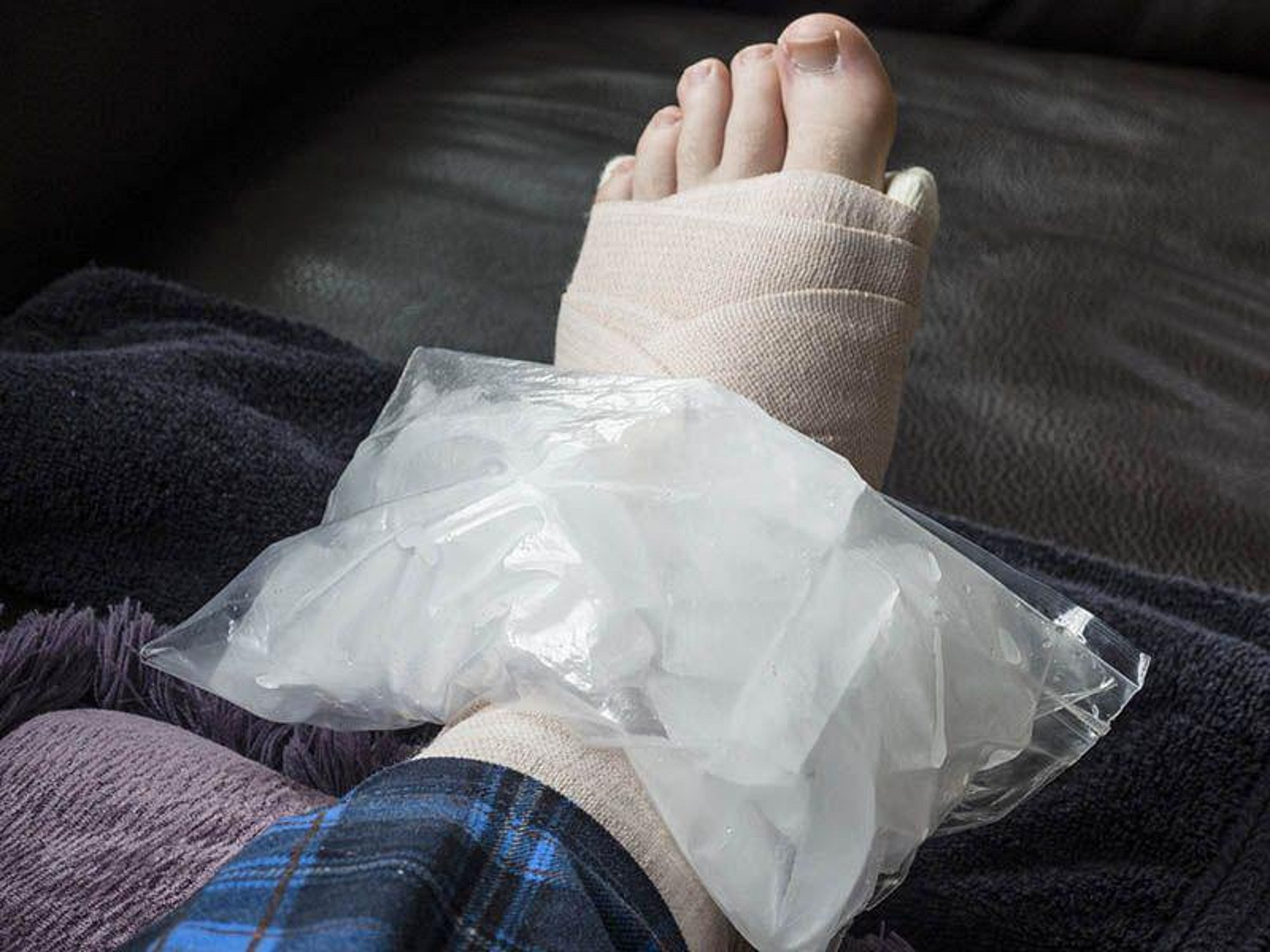First Aid for Pain

There's more to first aid than covering up wounds or stopping bleeding. When treating an injury, relieving pain should also be a top priority. Prompt treatment for pain will make an injured person feel more calm and comfortable. Pain relief may also make it possible for the person to move safely on her own -- a handy thing if the nearest phone is miles away. Pain can also be a guide to treatment. If pain is fading, the treatments are probably working. But if pain is severe or growing steadily worse, you know it's time to get professional medical help.
First aid for pain requires planning. When stocking a first aid kit, be sure to include over-the-counter pain relievers such as acetaminophen or nonsteroidal anti-inflammatory agents (NSAIDs) such as ibuprofen. NSAIDs can ease swelling as well as discomfort.
You should also include instant-activating cold packs to treat the pain of insect bites, bruises, and scrapes. Cold packs can also be applied to sprains and strains. Gauze, adhesive tape, and scissors will make it possible to properly dress burns, and elastic wraps, such as ACE bandages, can be used to wrap injuries to muscles, joints, or bones. It might be helpful to have some lightweight materials handy such as a folded newspaper or blanket that can be used to splint broken bones when necessary.
With a well-stocked first aid kit and sufficient knowledge about pain relief, you'll be prepared to respond to a variety of painful injuries.
- First- and second-degree burns. Run cool water over the burn to soothe the pain. (Don't use ice or cold packs, because they could slow blood flow and make the injury worse.) Then cover the burn with sterile gauze, if available. (A clean T-shirt will work in a pinch.) Give the person an over-the-counter pain reliever for extra comfort. Third-degree burns that go through the skin and into muscles or bone are a medical emergency. Call 911 or get to a hospital right away. You can wrap major burns in a cool, moist bandage, but immersing a person with extensive or severe burns in cold water could cause shock.
- Sprains, strains, dislocations, and fractures. RICE -- rest, ice, compression, and elevation -- is the best first aid strategy for painful injuries to muscles, joints, and bone injuries.
- Rest: The injured area should be used sparingly or not at all for 48 hours.
- Ice: Apply a cold pack or ice to the area for 20 minutes, four to eight times a day.
- Compression: Wrap the injured area in an elastic bandage.
- Elevation: When possible, keep the injured area elevated higher than the heart. An over-the-counter pain reliever will help ease the pain and swelling.
Obvious fractures and dislocated joints require medical attention right away. Don't try to straighten a dislocated limb, but protect it from further injury until you can see a doctor. For a dislocated shoulder, make a sling to help minimize movement and apply ice to the area to help with the pain.
- Bruises and scrapes. Gently clean areas with broken skin with cool water and cover them with a bandage.Hold a cold pack on the area to reduce pain and swelling.
- Cuts. Minor cuts simply need to be washed with soap and water, treated with an antibiotic ointment, and covered with a clean bandage. Apply pressure if the bleeding doesn't stop on its own after a few minutes. Seek prompt medical help if the cut is still bleeding after 10 minutes, if the wound is very dirty, or if you think stitches will be necessary.
- Stings. Wash the area with soap and water, then apply ice or a cold pack to reduce pain and swelling. Other treatments for mild insect stings:
- Apply a cold compress, and use topical steroid ointments or oral antihistamines to relieve itching if needed.
- Apply a 1 percent hydrocortisone ointment, which is available over the counter, if the itching is significant.
- An antihistamine such as diphenhydramine (Benadryl), also available over the counter, may also help.
Remember to seek immediate medical attention if you begin to have trouble breathing or if the swollen area around the sting site is particularly large or persists for more than 72 hours. When stings cause severe allergic reactions, they can be dangerous, even life-threatening.
An epinephrine pen (auto-injector) is a useful thing to have in your kit if you expect to be with someone who has severe reactions and needs immediate treatment. These allergy kits can be prescribed for this purpose by a physician.
Further Resources
Thygerson, Alton L., Thygerson, Steven M., and Thygerson.Matthew L. American Academy of Orthopaedic Surgeons (AAOS). Wilderness First Aid Field Guide. Jones and Bartlett. 2006.
References
Duke University Medical Center. Stocking a first-aid kit. http://www.dukemednews.org/news/healthtip.php?id=5710
National Safety Council. First Aid & CPR. http://www.nsc.org/safety_home/FirstAidCPR/Pages/F...
Arthritis Foundation. First aid with R.I.C.E. http://www.arthritis.org/resources/SIP/RICE.asp
Massachusetts General Hospital. Basic burn care/first aid burn treatment. http://www.massgeneral.org/burns/patients/
Mayo Clinic. Burns: first aid. http://www.mayoclinic.com/health/first-aid-burns/F...
The Harvard Medical School Family Health Guide. How to splint a fracture. http://www.health.harvard.edu/fhg/firstaid/splint....
Mayo Clinic. Dislocated shoulder when to seek medical advice. http://www.mayoclinic.com/health/dislocated-should...=5
American Academy of Family Physicians. Cuts, scrapes, and stitches: caring for wounds. http://familydoctor.org/online/famdocen/home/healt...
Mayo Clinic. Insect bites and stings: first aid. http://www.mayoclinic.com/health/first-aid-insect-...
Nemours Foundation. Insect stings and bites. http://kidshealth.org/parent/firstaid_safe/emergen...
Mayo Clinic. Cuts and Scrapes: First Aid. January 2008. http://www.mayoclinic.com/health/first-aid-cuts/FA...
Image credit: Shutterstock
Related Posts
¿Podría la ‘hormona del amor’ contribuir a la adicción sexual en los hombres?
JUEVES, 3 de febrero de 2022 (HealthDay News) -- Los hombres que se ven...
Toxins From Grilling, Smoking & Car Exhaust Could Raise Odds for Rheumatoid Arthritis
WEDNESDAY, May 10, 2023 (HealthDay News) -- Toxic chemicals that develop from...
Colic in Babies: Causes, Symptoms & Treatment
MONDAY, April 10, 2023 (HealthDay News) -- Most new parents have experienced the...
